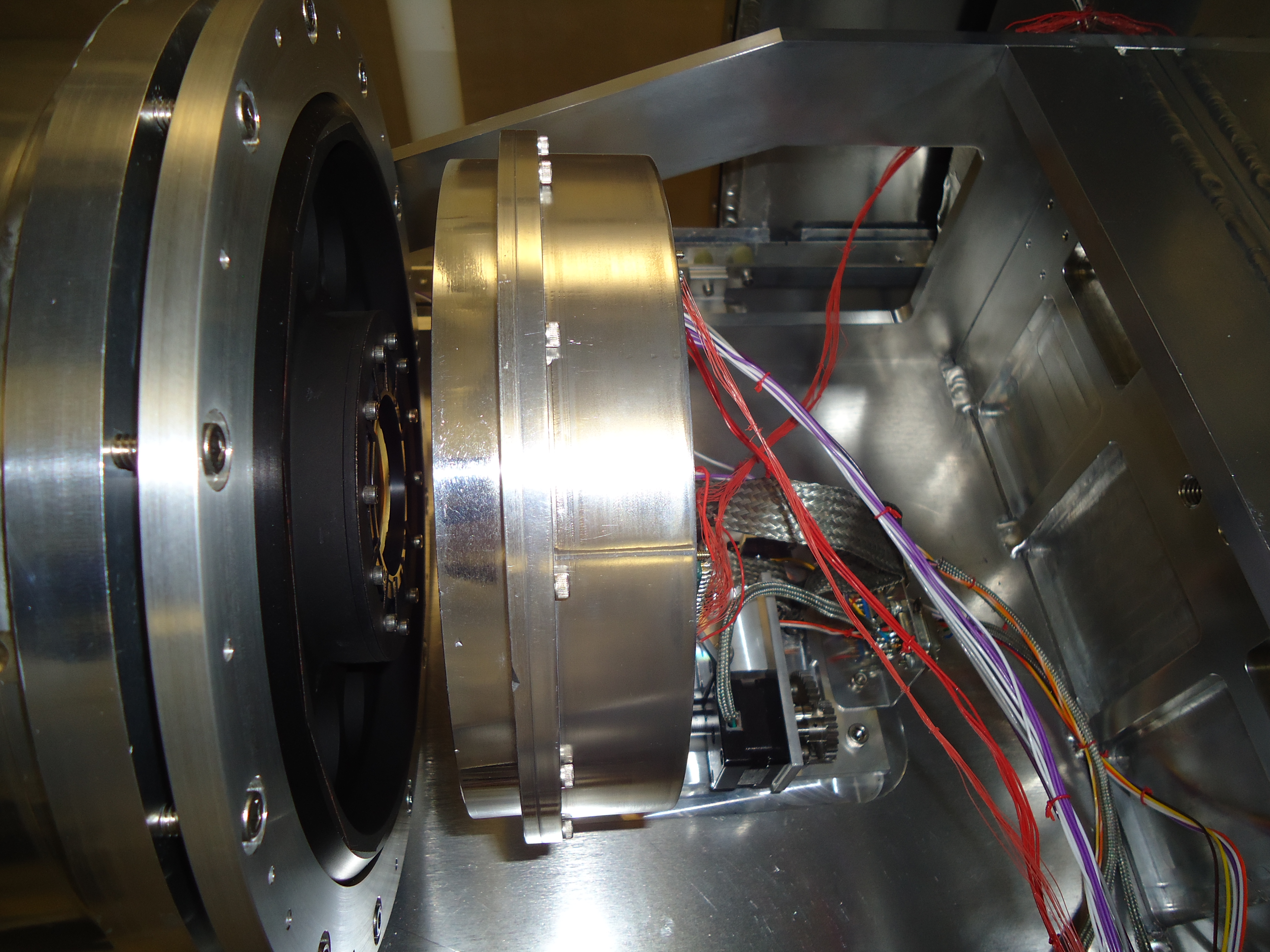NIIS Cryo-Mechanical Design
Hawaii-2 Detector Module
The Hawaii-2 detector is mounted on a
fan-out board kindly provided by John Geary (SAO/Harvard). The Hawaii-2
detector was built by Teledyne and consists of a HgCdTe 2048 x 2048
array bonded to a CMOS Silicon substrate. The array can be read through
up to 32-outputs enabling rapid read out. A corrolated double sampled
read of the full array takes 1.8 seconds.

The left-hand image shows the fanout board
within the detector housing. The test array can be seen in mounted in the ZIFF
scket. Three mounting points are also visible which support the fanout board
on G10 standoffs to thermally isolate the detector. The 32 readout circuits
are visible around the board along with 4 gold, heating resistors which are
used to maintain the temperature of the detector array. Two cooling straps
attach to the fanout board at two positions (top and bottom) and connect a
large, thermally-controlled copper block (not visible behind the fanout board)
to the array. The detector module is mounted on a stepper-motor driven focusing stage with microswitches that sense the focus limits. Not visible is the LVDT
sensor that is used to provide a high-precision measure of the focus position.
The right-hand image shows the rear of the fanout board with
the wiring harness in place. The detector wiring includes input bias voltages
and clock signals to the detector as well as inputs to the heating resistors
and temperature sensors. The outputs include the 32 output signals from the
detector array.


The detector module mounted within the NIIS
cryostat and immediately behind the camera optics. The input signals come in
from the bottom of the image and the output signals emerge at the top. The
detector focusing stage can be seen underneath the wiring harness. Not
shown is inner cold shield and outer radiation shield (MLI blanket).